India. Rampur, Uttar Pradesh. A few days back we talked about Mughlai Cuisine in our feature, The Royal Taste Of Mughlai Cuisine.
It is true to say that rich, royal food normally signifies Mughlai cuisine from the Mughal era and it always has been a favourite. But, there are many other rich and royal cuisines in India and Transcontinental Times takes this opportunity to introduce more of these exquisite delicacies.
Incredible Indian cuisines
The food in India is very specific by region and holds cultural significance. Also, influences of the neighbouring regions on the food habits are evident as in the case of Rampur cuisine.
Rampur, in Uttar Pradesh, boasts exotically mouth-watering, lip-smacking, rich food. Rampur’s rich and historical cuisine was fashioned by nawabs, Mughal viceroys. These historically significant delicacies are popular even today, as the tradition of making them has been passed on by generations of khansamahs.
Rampur
Rampur is a small town 150 km away from Delhi and 350 km from Lucknow. The history of the royal cuisine of Rampur dates back to 1774 when Faziullah Khan established the city under the protection of the British. Rampur became a safe haven for all artists, architects, writers, and chefs. Because of this migration, the town is known for hosting the biggest library in Asia. A number of cooks and khansamahs from other princely states made Rampur their home. This gave Rampur influences from various regions like Delhi, Lucknow, Hyderabad, and Kashmir which led to the blend in its cuisine.
Experimenting with food was a specialty of the nawabs and they encouraged the chefs to experiment and come up with unique dishes that had never been seen before. Regular contests were held for cooks to come up with these new dishes. The present cuisine reflects these historical events.
Rampuri cuisine
Rampuri cuisine is characterised by the use of ginger, onions, and a mix of mace and nutmeg. It is not as hot as foods of Old Delhi, not as sour as Hyderabadi food, and not as sweet as Mughlai or Awadhi food. It has been influenced by both Mughlai and Awadhi cuisines, yet is not as delicate as Awadhi and not as rich and full of spices, ghee, and nuts as Mughlai food. Rampuri cuisine is essentially a courtly cuisine, blending influences from Awadhi, Mughalai, Rajput, Afghani, and other cuisines. Because of the geographical location, Rampuri cuisine can be classified as something between Delhi’s Mughlai tradition and the Awadhi food.
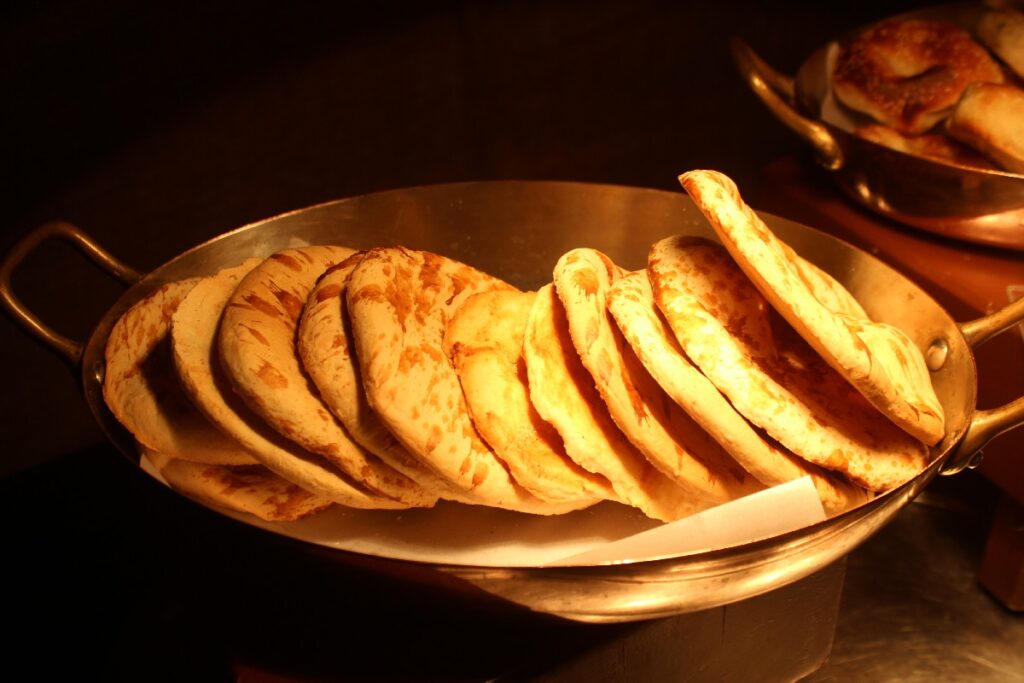
The main difference between the Awadhi and Rampuri cuisine is the usage of spices. Whereas Awadhi cuisine uses finely powdered spices, Rampuri cuisine uses Khada masalas or dry spices to give the dishes a unique flavour. Vegetables like bottle gourd, lotus stem, jackfruit, figs, pineapple, khus roots and even amla are among the favourite ingredients of the Rampuri cooks. Onions play a very important role in Rampuri food and are used in various forms; raw onion paste, brown onions and golden onions.
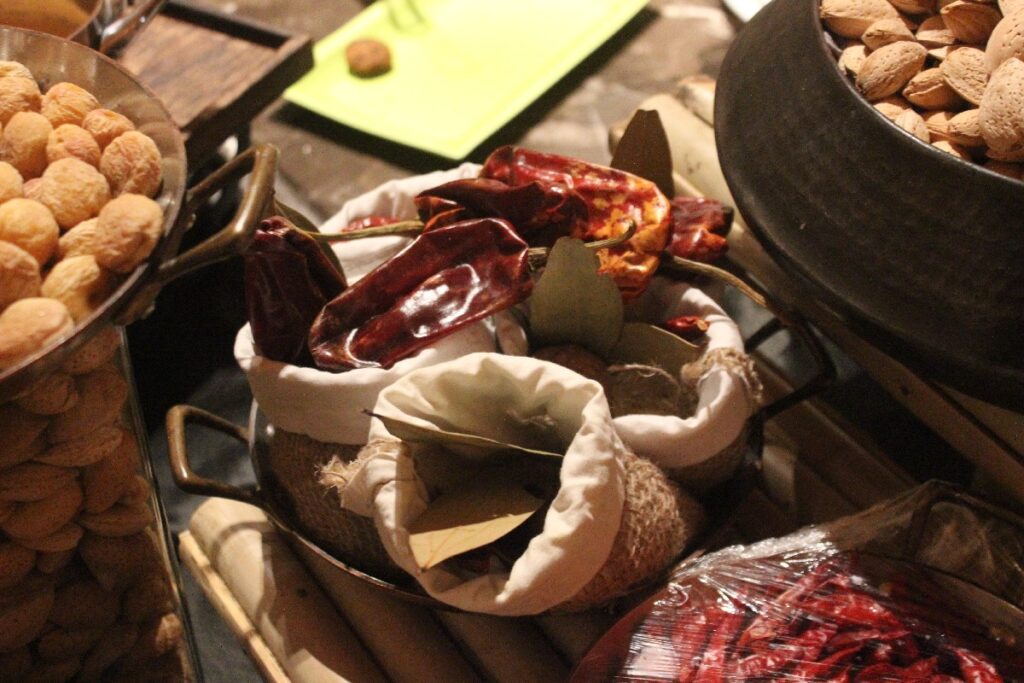
Rampuri cuisine is a meat-intensive cuisine with a fair amount of chicken and seafood. But there are enough interesting dishes for vegetarians too. The dishes are served with bread like Fitri, Rampuri Naan, Sheermal, and Khameer Roti made using yeast. And the most characteristic innovation of the royal Rampur cuisine is Badam Ki Roti which is made with flour made of ground almonds.
Variety of dishes
For non-vegetarians, the best known and most distinctive Rampuri dish is the Taar Qorma. The dish derives its name from the layer of fat; taar floating over of the curry, made primarily from beef. The fish and fig tikka is another yummy creation which is a lovely combination of fig with the spices and the dish melts in the mouth.
Achari Baingan (eggplant cooked with spices), Aloo Katliyan (Slice potatoes cooked with spices), Ghiya Chane ki Dal (Lentil cooked with Bottle Gourd), Khush Urad ki Dal (Dry lentils cooked with spices) are some of the well known vegetarian dishes that are always a hit in a Rampuri Kitchen.
Signature delicacies
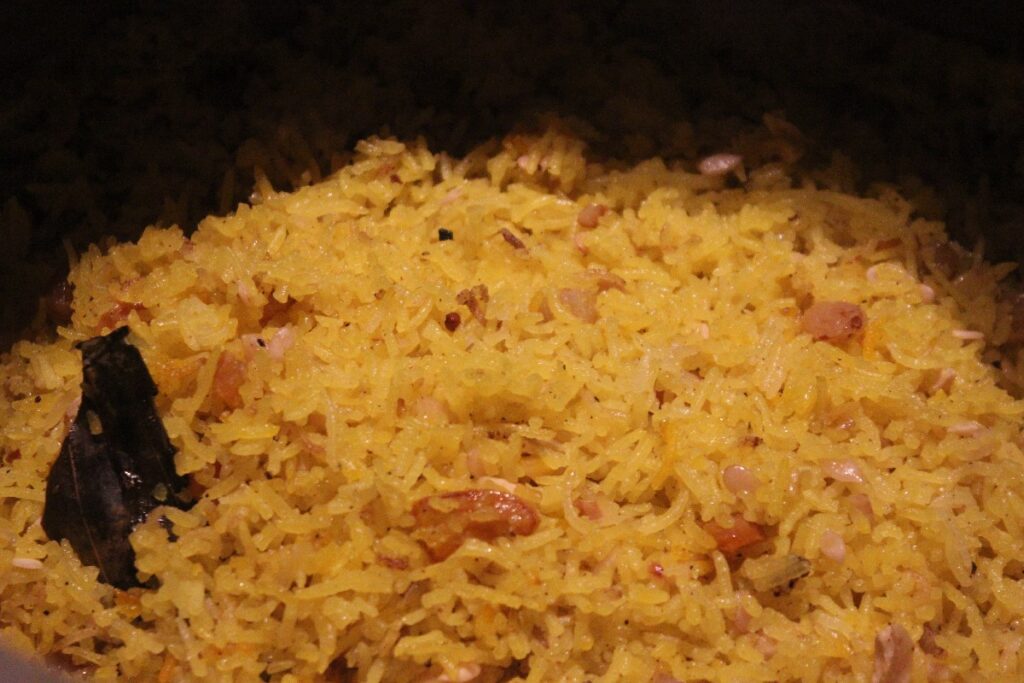
Signature delicacies like Meethe Chawal, a rice preparation that is made using twice the quantity of sugar or sugarcane juice to create a sweet pilaf that has the texture of biryani, is one of the main delicacies. Zarda chawal, dal khichada, and doodhiya biryani are other unique creations of the Rampuri kitchens.
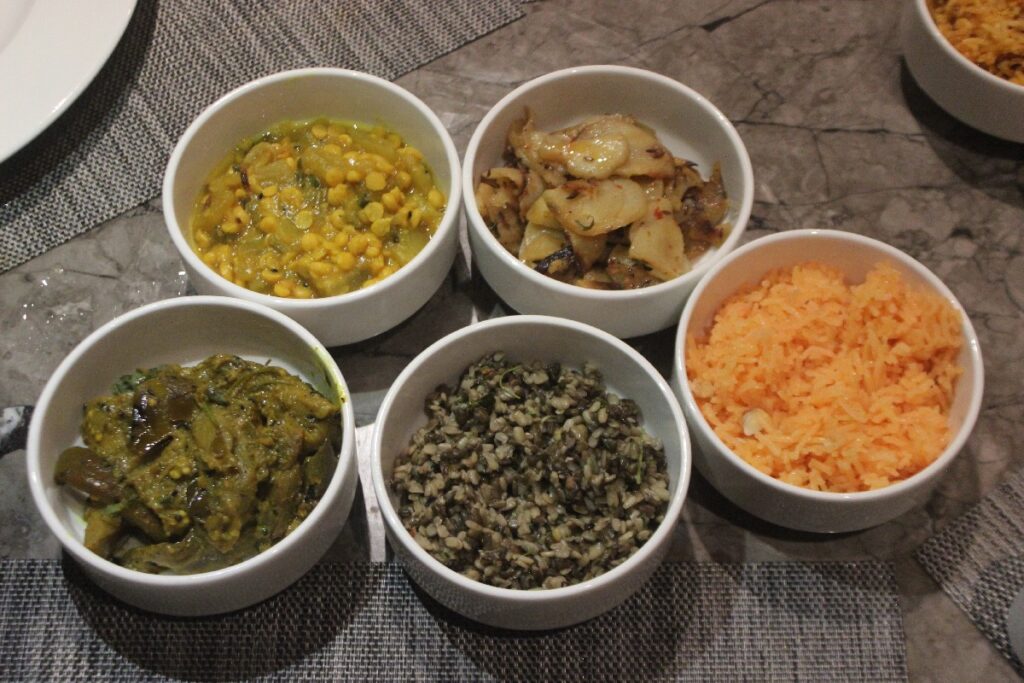
The chefs at Rampur were champions when it came to innovative usage of ingredients. They used bottle gourd and papaya to tenderise meat for kebabs and curries and used varq to give flavour and beauty to desserts.
Desserts
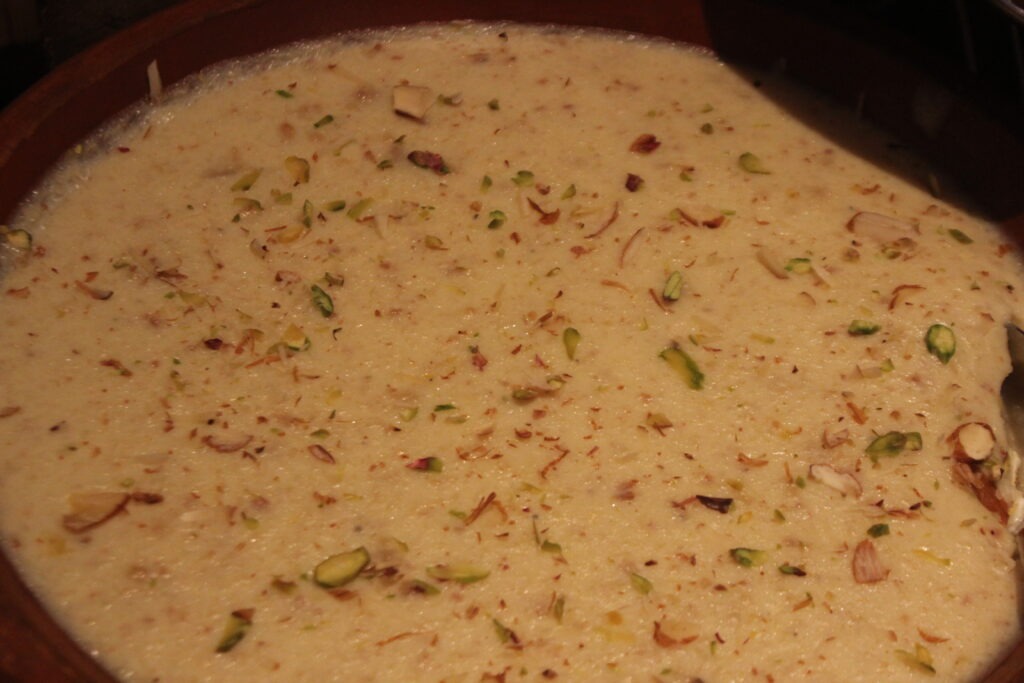
Desserts are also an important part of a Rampuri meal. They are unique and delicious due to cooking experimentation. Halwa and puddings made with unusual ingredients like ginger, meat, chicken, fish, chilies, beetroot, and eggs simmered with cow’s milk and spices to create the favourites.


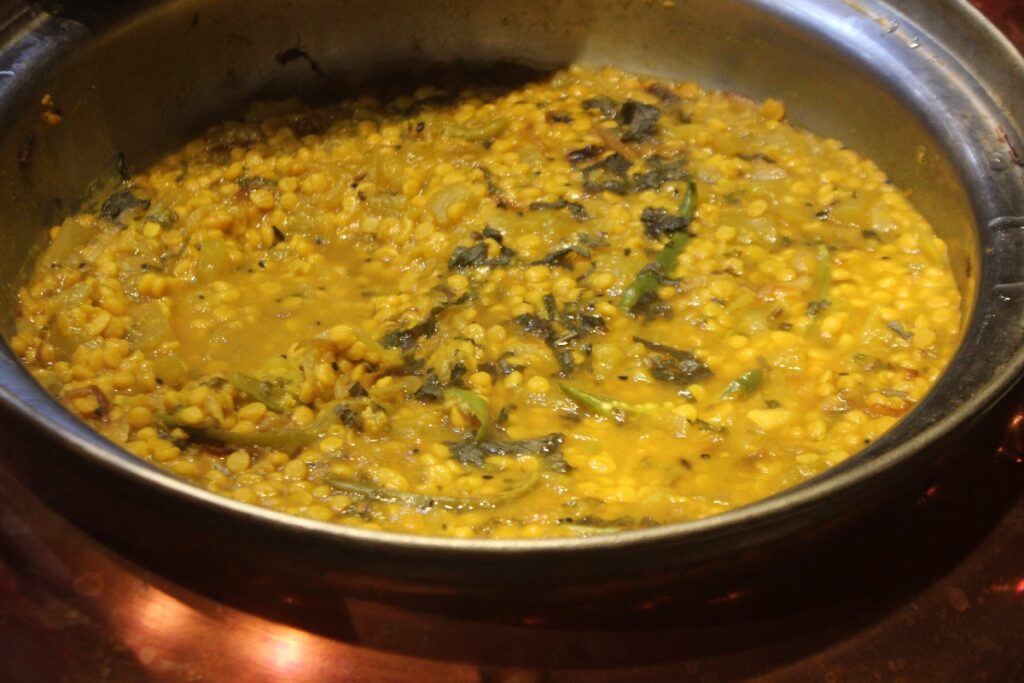
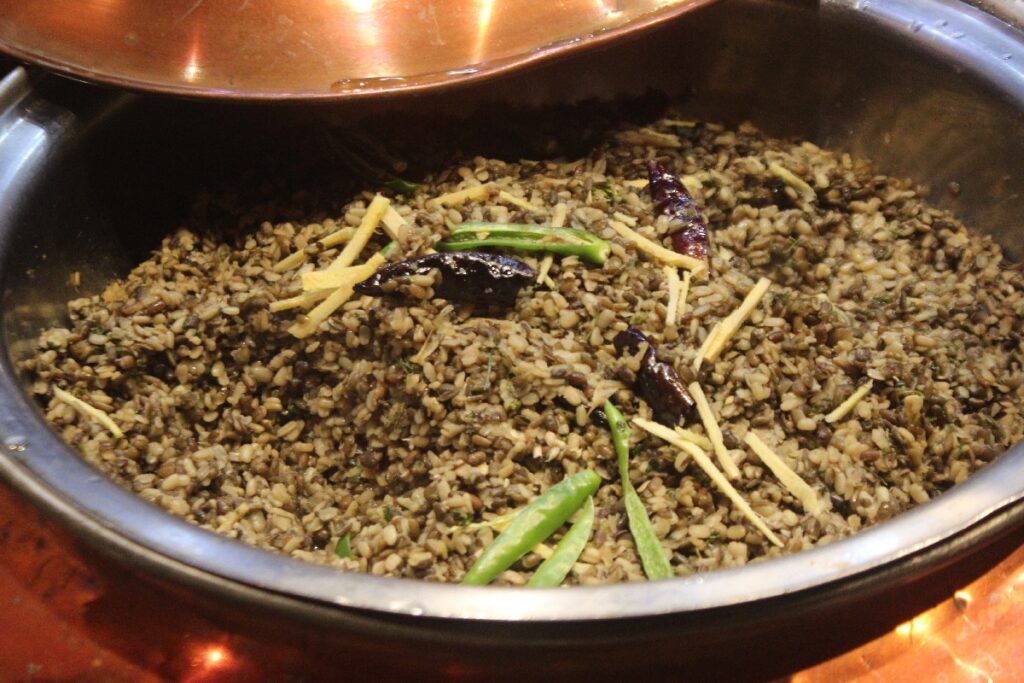


Comments are closed.